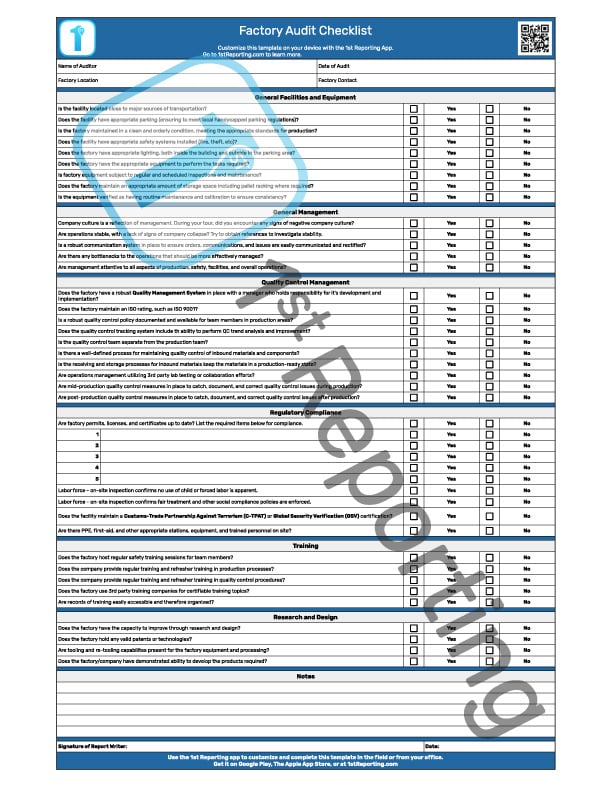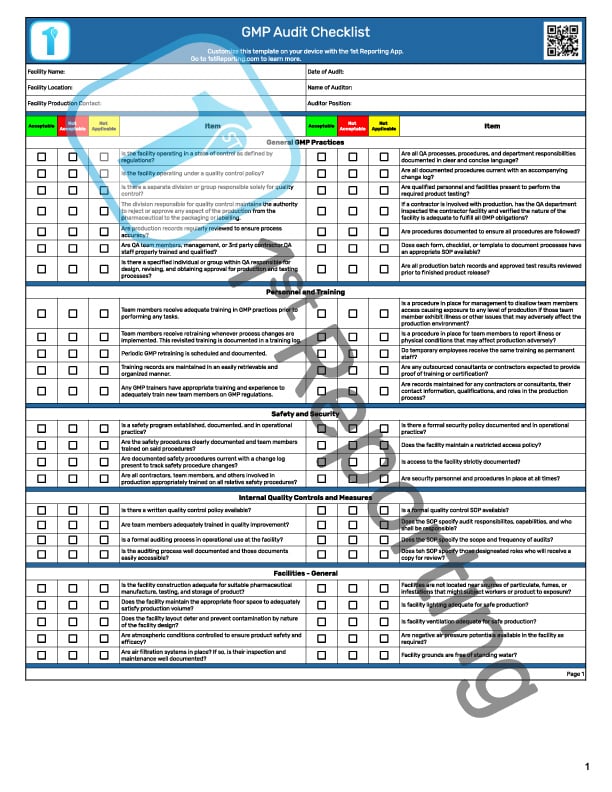
During the course of any business fiscal year, companies are expected to look inward to account for inventory and improve operations. All successful operations include self-analysis and quality assurance audits for progressive improvement. Whether your business is in manufacturing, security, transportation, or even healthcare, quality assurance audits of products, processes, and systems ensure growth and fend of stagnation for a business while improving products, services, and operations.
Most QA audits that are not useful focus on externals and the fault typically lies with the planning process of the audit itself. For this reason, there are five critical elements we are going to provide some tips and insight into today regarding the quality assurance audit preparation and execution processes.
- Define Your Objectives
- Assess The Landscape
- Plan Your Audit
- Keep It Simple
- Triage Audit Results
We invite you to take a few moments and read each tip. There are angles to these tips that will help your processes hone to work like a well-oiled machine, so stick with us. Let’s dive right into the quality assurance audit process tips to help your business.
5 Quality Assurance Audit Tips You Should Not Ignore
There are three primary reasons why quality assurance audits fail:
- Poor planning
- Poor auditing
- Lack of follow-through
The auditing process and follow-through are highly dependent upon your management team. The planning, however, tends to fall to a single manager, or in the case of larger corporations, a team of managers.
Planning your QA audits with meticulous precision is critical to your process success. A well-planned audit will guide the auditors through the audit process, making our poor auditing scenario less likely. And a proper plan in conjunction with a well-executed audit will almost definitely mean that your systems are running well enough to guarantee you’ll handle the follow-up work required by the audit.
Due to these trends pointing towards the importance of pre-planning your QA audit, we’ve decided to aid with the pre-planning process as much as possible.
Define Your Objectives
One of the most important steps of a robust quality assurance audit program is pre-planning. Many managers view only their obligations and see the QA audit as either a necessary evil or a nuisance they would rather pass on to someone else to manage. However, a successful manager understands the quality assurance audit is a powerful tool that can find use in a business for improving not only things like product manufacturing, but also services, and even the inner processes themselves within a company.
Defining your objectives for your quality assurance audit is essential to a successful auditing process. It allows you to tune your process to suit your objectives and the surrounding environment. Perhaps a particular audit will require a specific plant shutdown for a period, or perhaps a product assembly line will need special provisioning to suit full inspections. No matter the particulars, a well-planned audit with clear objectives will be easier to train others to complete. It will also be easier to complete the process itself due to a clear and defined goal. (source)
We cannot map a journey without knowing our intended destination. This statement could not be more true when it comes to audits and the importance of defining their objective.
Assess The Landscape
To assess the landscape of our quality assurance audit, we need to understand first our objectives. Once we have a clear objective, we must understand the nature of the audit.
Is the audit performed on an intangible process?
Is the audit an inspection of a tangible procedure (like an assembly line segment)?
Understand who is involved, and what their motivations are. If auditing a coworker, you need to understand the particulars, or if auditing a product, you need to understand industry regulations and specifics regarding the particular product.
Doing a bit of background research to understand and assess the audit landscape is essential to an objective view when planning the audit’s procedures through to completion.
Plan Your Audit
A quality assurance audit is a documented process of information gathering for the purpose of improvement. When you plan how the audit will implement into your schedule and processes, it’s important to maintain this implementation and consider in your pre and post-auditing plans.
Planning the route and methodology of an audit, whether completed internally or via an outside company, guarantees your best use of your resources and that includes the most valuable of all – time. A properly planned approach will save time. Not necessarily on the first audit, but in the long run, saving time is essential to moving forward. (source)
Keep It Simple
One of the most important lessons in business management is to keep things simple. Overcomplicating anything is never good for anyone involved. When it comes to quality assurance audits, the statement couldn’t be more true.
Recall that the point of a quality assurance audit is to improve and standardize. Standardization is vital to replication and scalability. Without standardization, large-scale improvements are not likely achieved. With highly complex processes or procedures, standardization becomes increasingly difficult relative to the complexity of the required processes.
The takeaway here is that a managing attitude of maintaining simplicity at scale is much more effective than it’s opposite, creating and maintaining highly complex systems. In the case of a complex system, many sub-systems are required to break down the overall process further into its more manageable bite-sized components.
Keep your processes and reporting procedures simple with easy-to-use, free, downloadable templates including incident reports, warehouse safety checklists, facility inspection checklists, and many more. Find all the templates in our downloadable template library here.
Triage Audit Results
One of the most prolific tragedies of the quality assurance audit is a lack of completed resultant action. What good is a quality assurance audit if no action is taken for improvement?
The auditor should be responsible for always finding at the very least a sound recommendation. When this doesn’t happen, there are only two possibilities: 1) the situation is self-resolved or 2) some re-training is required for your auditor.
Ninety-nine percent of the time, situations don’t resolve themselves. I used that example for example purposes only.
Auditors ought to find several recommendations, despite the basic type of audit. Whether or not the auditor chooses to report said findings is a different story.
When auditors find issues that meet the requirements to find them noted on a quality assurance audit, the resultant issues must be triaged according to their ability to cause a fatal or severe result. The resultant shortlist can then be dealt with, one or several items at a time.
Is Your Company ISO Ready?
Once your company has achieved a stable standard for quality and there are processes in place and working to constantly improve processes, services, products, and procedures, then you might want to consider ISO accreditation.
Implementing standards within your organization that comply with ISO 9000 standards means that your business meets or exceeds the quality management guidance and quality assurance requirements set forth by the ISO standard. In short, the certification shows a dedication to adherence to quality improvement and organized management. It also means that the company is likely more secure than their non-accredited competition, so there is an extra element of trust through accreditation. (source)
If your company is on the right path to ISO certification, you can step up your game even more with a digital reporting and auditing solution.
1st Incident Reporting offers a mobile app with customizations for your audits, checklists, reports, and more. The app is versatile – working on nearly any device, most Android, iOS, Windows, and Apple devices compatible.
Aside from the customizable reports, instant custom notifications, cloud-based mobile app benefits, the creators are also ISO certified, so you know you are working with a trusted partner for your mobile reporting solutions.



